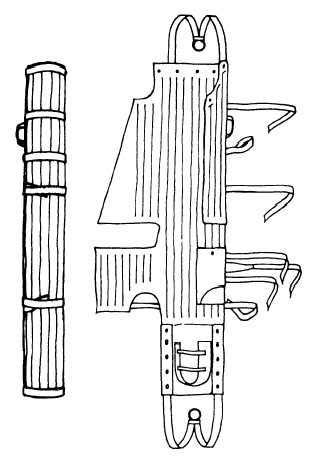but a new version is made of molded plastic. It is adaptable to a variety of uses, since the casualty can be held securely in place even if the stretcher is tipped or turned.
The Stokes stretcher is particularly valuable for transferring injured persons to and from boats. As mentioned before, it can be used with flotation devices to rescue injured survivors from the water. It is also used for direct ship-to-ship transfer of injured persons. Fifteen-foot handling lines are attached to each end for shipboard use in moving the victim. The Stokes stretcher should be padded with three blankets: two of them should be placed lengthwise, so that one will be under each of the casualties legs, and the third should be folded in half and placed in the upper part of the stretcher to protect the head and shoulders. The casualty should be lowered gently into the stretcher and made as comfortable as possible. The feet must be fastened to the end of the stretcher so that the casualty will not slide down. Another blanket (or more, if necessary) should be used to cover the casualty. The casualty must be fastened to the stretcher by means of straps that go over the chest, hips, and knees. Note that the straps go OVER the blanket or other covering, thus holding it in place.

Figure 4-78.—Opening an Army litter.
ARMY LITTER.— The Army litter, shown in figure 4-78, is a collapsible stretcher made of canvas and supported by wooden or aluminum poles. It is very useful for transporting battle casualties in the field. However, it is sometimes difficult to fasten the casualty onto the Army litter, and for this reason its use is somewhat limited aboard ship. The litter legs keep the patient off the ground and fit it into the restraining tracks of a jeep or field ambulance to hold the litter in place during transport.

Figure 4-79.—Neil Robertson stretcher.
NEIL ROBERTSON STRETCHER.— The Neil Robertson stretcher is especially designed for removing an injured person from engine rooms, holds, and other compartments where access hatches are too small to permit the use of regular stretchers. You can also use it to hoist a casualty aboard a hovering helicopter by attaching a rescue line.
The Neil Robertson stretcher is made of semirigid canvas with sewn-in wooden slats sewn the length of the stretcher. When firmly wrapped
